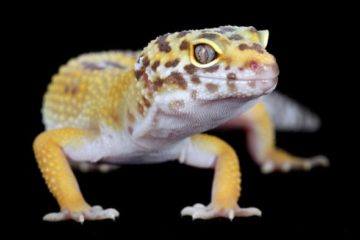Maddie Bender in Scientific American:
 When reptile breeder Steve Sykes saw that two particular leopard geckos were up for auction in 2015, he knew he had to have them. The chubby lizards’ bodies were dappled with the black spots that gave their species its common name. And at eye level, they looked to be smiling. But unlike other members of Eublepharis macularius, these were “lemon frost” geckos: they were pastel yellow from the base of their head to the root of their tail, as if they had been dipped in lemon sherbet. A breeder had created this variety, also called a “morph,” just one generation earlier. The combination of rarity and beauty made the two geckos instantly appealing to Sykes. He purchased the pair and named them Mr. and Ms. Frosty.
When reptile breeder Steve Sykes saw that two particular leopard geckos were up for auction in 2015, he knew he had to have them. The chubby lizards’ bodies were dappled with the black spots that gave their species its common name. And at eye level, they looked to be smiling. But unlike other members of Eublepharis macularius, these were “lemon frost” geckos: they were pastel yellow from the base of their head to the root of their tail, as if they had been dipped in lemon sherbet. A breeder had created this variety, also called a “morph,” just one generation earlier. The combination of rarity and beauty made the two geckos instantly appealing to Sykes. He purchased the pair and named them Mr. and Ms. Frosty.
Leopard geckos are among the most common reptile pets. Native to the Middle East and South Asia, they have been so successfully bred in captivity that most sold today are not sourced from the wild. Instead owners create and mix dozens of morphs through selective breeding and random luck. The issue emerged with Mr. Frosty’s offspring. Sykes had bred the male with other leopard geckos he owned to produce more of the coveted lemon frosts. A year after the auction, he noticed small, white bumps growing on the bodies of some of the babies. Over time, he says, it became clear that these bumps were tumors. In fact, it turns out that more than 80 percent of the geckos with this morph suffer from a rare skin cancer that arises from pigment-producing cells called iridophores.
Sykes wanted to know if there was a way to breed lemon frosts to avoid this fate. Were the cancer and unique color somehow inextricably linked? Evolutionary geneticist Leonid Kruglyak of the University of California, Los Angeles, and his colleagues used Sykes’s geckos to crack the lemon frost genetic code—and found that a single gene controlled both the color and the cancer.
More here.
